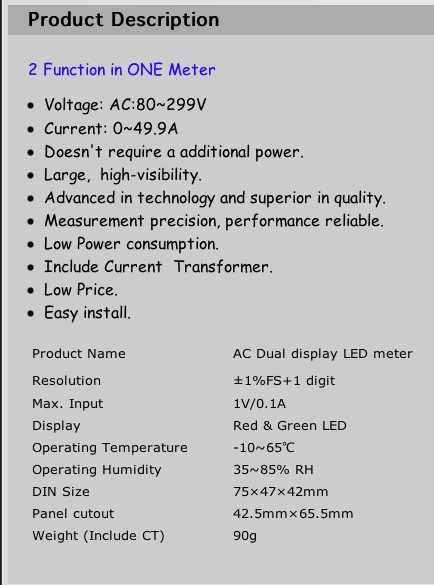everty2007
Well-Known Member
Hey Guys,
I found a dual amp/ volt meter on ebay that went with the colors of my PIDs.
After receiving this meter I'm not sure what I need to do to wire this up without bowing it up lol. So once again I thought that I would see what the ever so helpful minds of HBT thought.
So part of the reason I bought it was that I thought the transformer was built in, but it came with a small circular transformer pictured in wiring diagram with two wires coming from it.
So not being an electrician, I was wondering if anyone had any thoughts based on these diagrams, I have built a Kal inspired set up but did not install the meter originally because I have a smaller enclosure and did not have room for both meters, but would like to add this dual one. Any advice would be appreciated and thanks for taking the time to read my post.
Cheers!


I found a dual amp/ volt meter on ebay that went with the colors of my PIDs.
After receiving this meter I'm not sure what I need to do to wire this up without bowing it up lol. So once again I thought that I would see what the ever so helpful minds of HBT thought.
So part of the reason I bought it was that I thought the transformer was built in, but it came with a small circular transformer pictured in wiring diagram with two wires coming from it.
So not being an electrician, I was wondering if anyone had any thoughts based on these diagrams, I have built a Kal inspired set up but did not install the meter originally because I have a smaller enclosure and did not have room for both meters, but would like to add this dual one. Any advice would be appreciated and thanks for taking the time to read my post.
Cheers!




